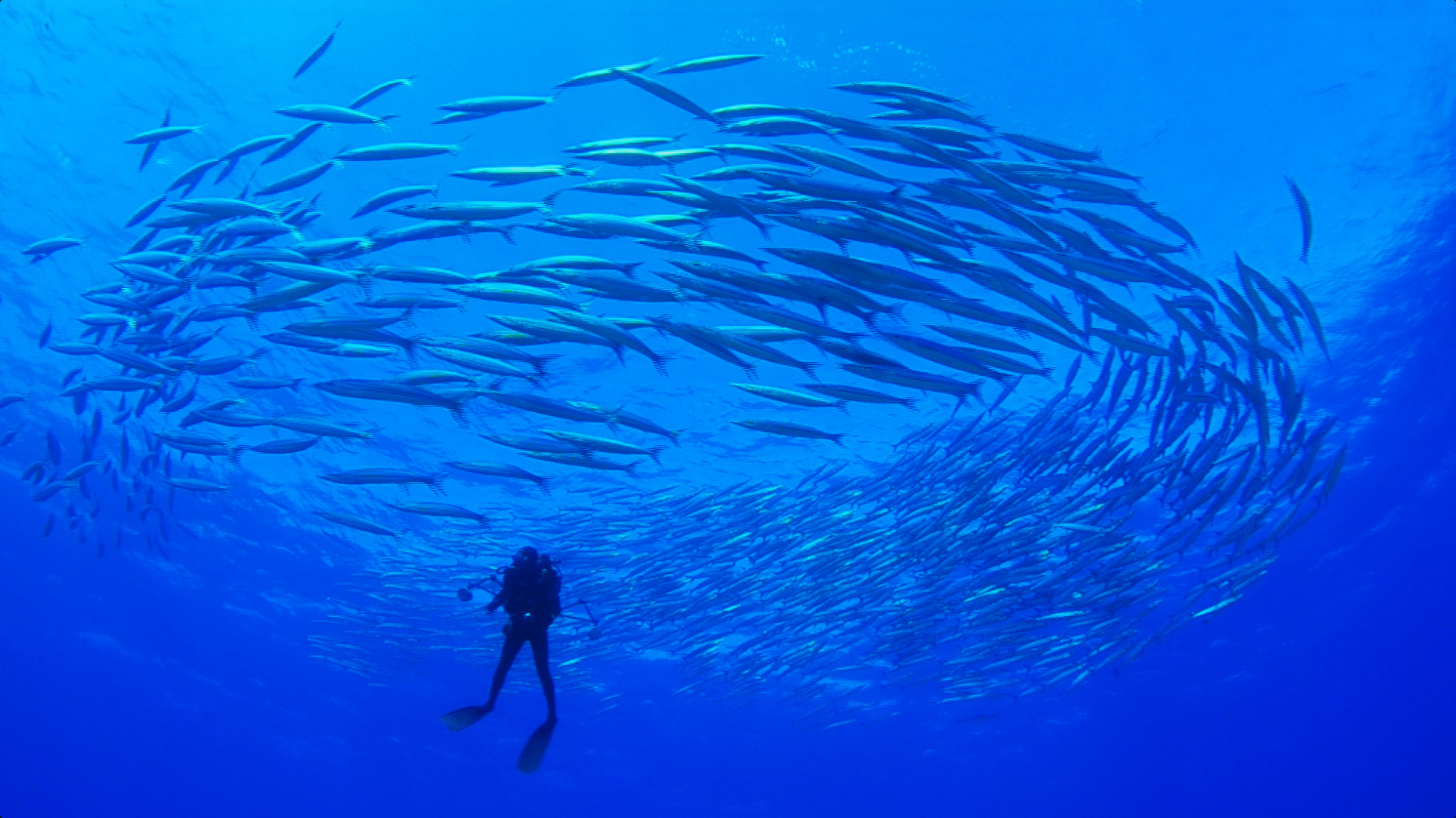
Two Juan Fernandez fur seals (Arctocephalus philippii) slide through the water off the Desventuradas Islands about 559 miles (900 kilometers) west of Chile. Divers snapped this picture during a 2013 expedition to an area that is now the largest no-take marine reserve in the Americas.
Chile Creates Largest Marine Reserve in The Americas
The newly protected waters around the Desventuradas Islands contain many marine species found nowhere else on Earth
Valparaiso, CHILE—The Chilean government on Monday announced that it has created the largest marine reserve in the Americas by protecting an area hundreds of miles off its coast roughly the size of Italy.
The new area, called the Nazca-Desventuradas Marine Park, constitutes about eight percent of the ocean areas worldwide that have been declared off-limits to fishing and governed by no-take protections, says Russell Moffitt, a conservation analyst with the Marine Conservation Institute in Seattle, Washington.
The Pac-Man-shaped marine protected area (MPA) encompasses roughly 115,000 square miles (297,000 square kilometers) of ocean around San Ambrosio and San Felix islands. Together, they're known as the Desventuradas (or Unfortunate in Spanish) Islands, which are part of the underwater Nazca Ridge, which runs southwest from Peru to Easter Island.
These islands had been subject to a modest amount of fishing, mainly for swordfish, before the creation of the new park, says Alan Friedlander, chief scientist for National Geographic Society’s Pristine Seas project. The project partnered with Oceana to promote designation of the new MPA. (Learn about what makes a successful MPA.)
The swordfish catch around the Desventuradas Islands amounted to about 0.5 percent of Chile's total swordfish haul.
Fishing will be allowed to continue in an unprotected wedge-shaped area that gives the new MPA its distinctive shape, says Alex Muñoz, vice president of Oceana in Chile. In addition, a small lobster fishery, which has been certified as sustainable by the Marine Stewardship Council, an international organization, will continue in a small area outside of the reserve.

MATTHEW W. CHWASTYK, NG STAFF
SOURCE: UNDERSECRETARY OF FISHERIES AND AQUACULTURE, CHILE
SOURCE: UNDERSECRETARY OF FISHERIES AND AQUACULTURE, CHILE
The main reason groups pushed for the new MPA was to protect an intact ecosystem, Friedlander explains. That's important because studying pristine ecosystems gives scientists a good idea of how marine communities are supposed to function.
Protecting a Wealth of Life
Desventuradas sits in a unique oceanic environment, harboring a mix of tropical and temperate species.
Due to its isolation from the mainland—it takes a two-day boat ride from Chile’s coast to get there—much of Desventuradas’ marine life is endemic, or found nowhere else in the world, says marine ecologist Enric Sala. Endemic species include Juan Fernández fur seals, the Chilean sandpaper fish, andJuan Fernández trevally.
About 72 percent of the species found around Desventuradas and an island chain known as the Juan Fernández archipelago—about 466 miles (750 kilometers) to the south—is endemic, says Sala, an Explorer-in-Residence with National Geographic who heads the Pristine Seas project, which aims to protect the last wild places in the oceans.
Monday's announcement triples the amount of Chile's offshore waters that are under the strongest protections.
"For many years, Chile has been one of the most important fishing countries in the world," says Muñoz.
"For many years, Chile has been one of the most important fishing countries in the world," says Muñoz.
"Unfortunately, that led to depletion of our marine resources," he says. "With the creation of this marine park around Desventuradas, we're also becoming a leader in marine conservation."
One Step at a Time
Moffitt, who was not involved in the Desventuradas project, says it may be more urgent to protect near-shore waters that are heavily impacted by fishing or pollution than to close off these waters so far offshore.
"The prevailing trend has been to protect large MPAs and large reserves far from shore and far from large population centers, usually with low fishing interest," he says. These isolated MPAs are low-hanging fruit in a way, he says. (See pictures from Gabon's newest marine protected area.)
"We really need to be creating a more diverse portfolio of marine reserves,” he says.
Both Sala and Muñoz agree that nearshore waters need protection, too. But isolated areas like the Desventuradas are threatened by long-distance fishing fleets and bottom-trawling.
And protecting them before they become degraded is not only scientifically valuable, but also cost effective, says Friedlander.
WATCH: See the rich and diverse ocean habitat surrounding Desventuradas Islands, which is now a marine protected area. http://news.nationalgeographic.com/2015/10/151005-desventuradas-islands-marine-protected-area-conservation-science/
WATCH: See the rich and diverse ocean habitat surrounding Desventuradas Islands, which is now a marine protected area. http://news.nationalgeographic.com/2015/10/151005-desventuradas-islands-marine-protected-area-conservation-science/
The Chilean navy has a small presence on San Felix Island and will be helping enforce the no-fishing rules, says Muñoz.
"[The navy] will be ensuring the integrity of this park," says Sala. "They are a very, very important player."
"[The navy] will be ensuring the integrity of this park," says Sala. "They are a very, very important player."
Countries around the world still have a long way to go to meet the United Nations’ goal of protecting 10 percent of the world's oceans by 2020. But Moffitt says the Desventuradas park is a step in the right direction, and Muñoz says he has already set his sights on protecting another area in the Juan Fernández archipelago.









No comments:
Post a Comment